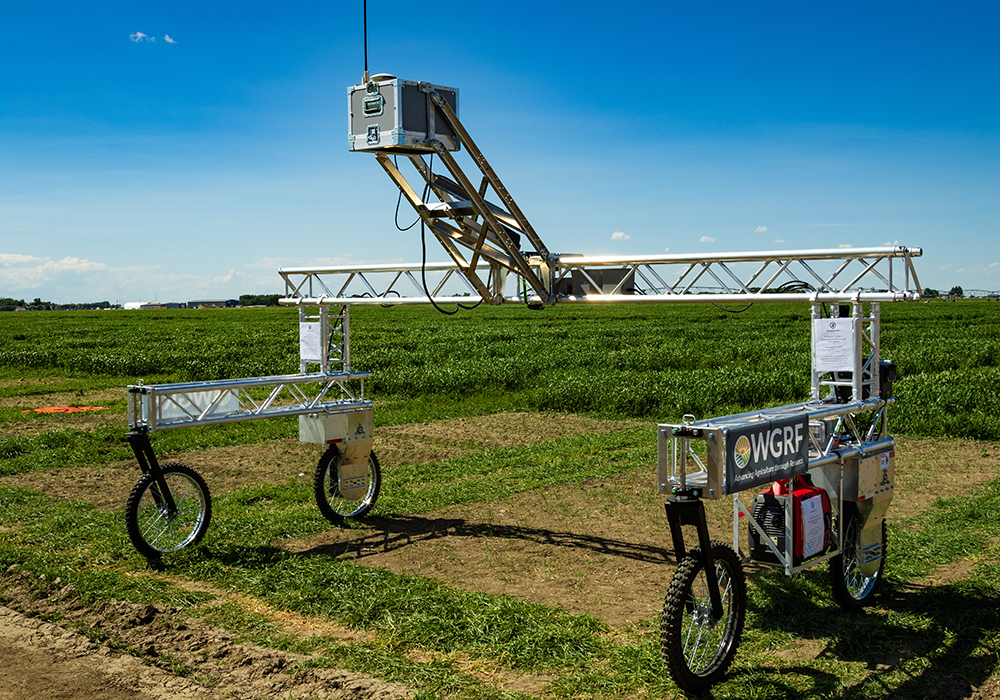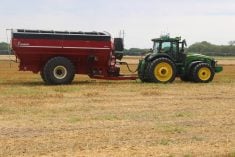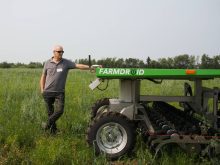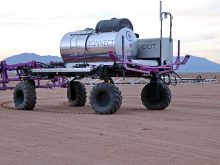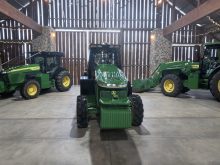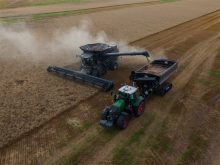AAFC, USask team up in robotic phenotyping of spring wheat trials
Agriculture and Agri-Food Canada researchers are strapping phenotyping equipment to unmanned, ground-based vehicles (UGVs) in an effort to develop technology that will advance crop breeding programs.
Keshav Singh, a research scientist from AAFC Lethbridge, is leading the three-year pilot project.
Other stories in the New Seed Variety Guide 2025:
- What crop traits are on your wish list?
- Rethinking oats
- Early maturing soybeans
- Durum variety designed for higher food fibre
- Genetic modification, global trade and illegal seed concern seed growers
“The primary goal of the project is to develop protocols and establish a big-data processing and analytics pipeline for using UGVs in Canadian crop management,” said Singh. “This initiative will significantly aid field agronomy and plant breeding programs, contributing to the precision agriculture and digital plant phenotyping fields.”
Read Also
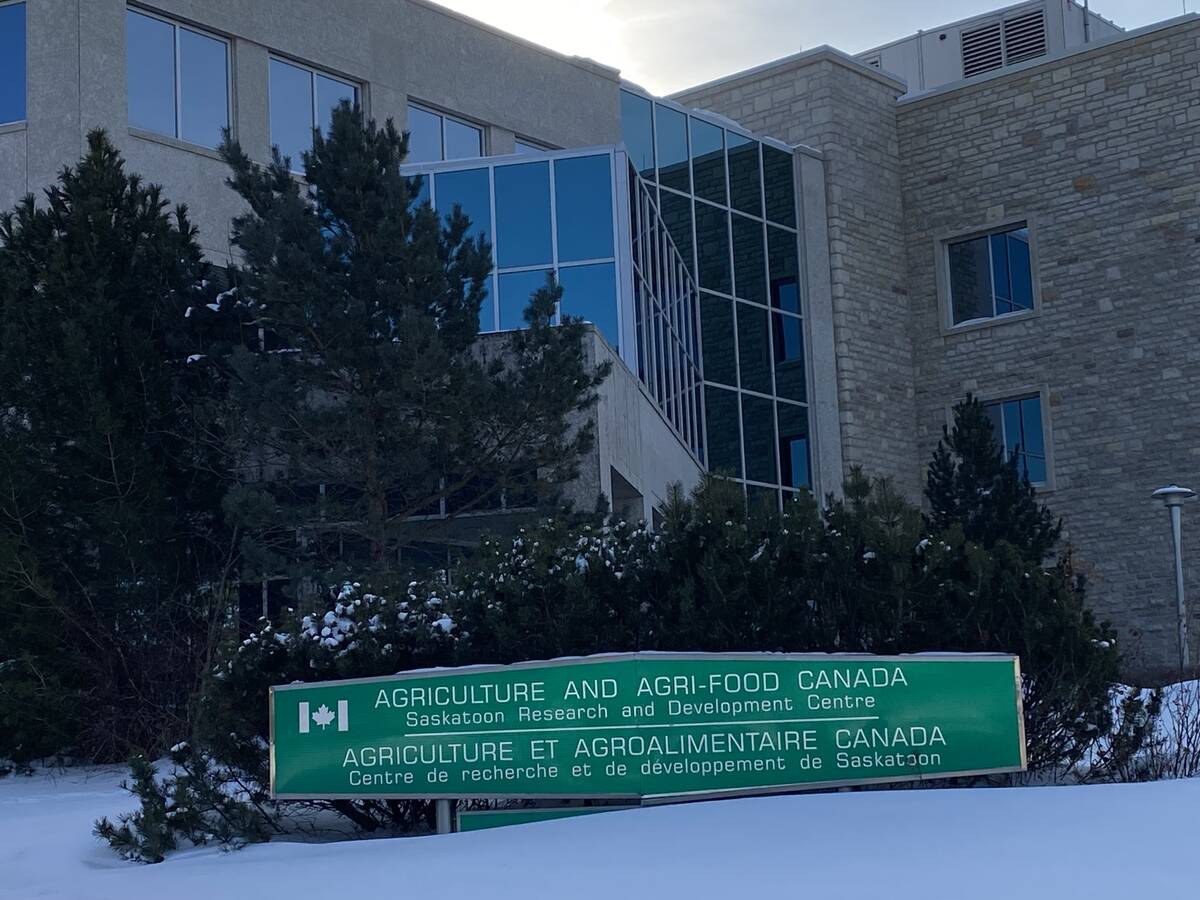
Don’t undermine the backbone of agriculture
Agriculture Canada and the dedicated public servants who work every day to support Canadian agriculture are a crucial pillar of the sector and they need support — not austerity.
Singh’s Remote Sensing and Phenomics group (RSP Lab) at the Lethbridge Research Centre is leading the project in collaboration with the University of Saskatchewan. The team from the U of S designed and built the UGVs used in the project, which are known as the University of Saskatchewan Field Phenotyping System, or UFPS carts.
The Saskatchewan team is working on the design and research aspects of the crop breeding initiative, while Singh’s group is managing the imaging data acquisition and developing avenues to support crop breeding programs.
“This is a low-cost device built for the purpose of being used in the agriculture field,” Singh said.
The UFPS cart is basically a motorized, remote-controlled robot capable of carrying an assortment of different sensors.
“The cart, in some ways, is the least important part of the system,” said Scott Noble, the Department Head and Associate Professor, Mechanical Engineering at the University of Saskatchewan, who leads the Saskatchewan team. “The cart carries the things that gather the data. The innovative part is the way we’ve put the control software together that allows us to very easily change out the instruments we’re using.”
With funding from the Western Grain Resarch Foundation and Sask Wheat, AAFC acquired six of the carts. One cart was sent to Lethbridge, Alberta, two carts to Saskatoon and Swift Current in Saskatchewan, two carts to Brandon and Morden in Manitoba, and the final cart is in Ottawa.
For the purpose of the AAFC project, the equipment the carts carry includes a GPS system, a LiDAR scanner, a visible light sensor (RGB) and a near-infrared sensor—a relatively simple configuration, said Noble. “We’ve had versions of them with more and different instruments.”
AAFC’s current experiments are looking at various spring wheat cultivars. The cart’s equipment is used to collect data on emergence, plant density, plant height, lodging, crop cover, flowering date, maturity date and canopy structure.
The project is supported by a cloud-based high-performance computing platform called the General Purpose Science Cluster (GPSC) that Singh said is built for dealing with large data sets.
“It’s for big data management, storage, processing and secure sharing with external collaborators,” he said. “It’s the first of its kind within AAFC.”
2024 is the second year of the three-year project, and with new equipment, there’s always a learning curve. Noble said some of the bugs are only now being ironed out in the system.
“We are still in the process of figuring out the best ways to do certain things,” said Noble. “Whenever you hand something off to somebody else, you very quickly learn the things that you were taking for granted.”
One of the remarkable things about the AAFC project is that Singh’s team is running the same experiment in six very different locations, with different geographies and climate zones, using the same equipment.
“I’m not really aware of any places where that sort of thing has been done,” said Noble. “It’s really exciting from a research perspective to actually be able to do more direct comparisons across so many different environments.”
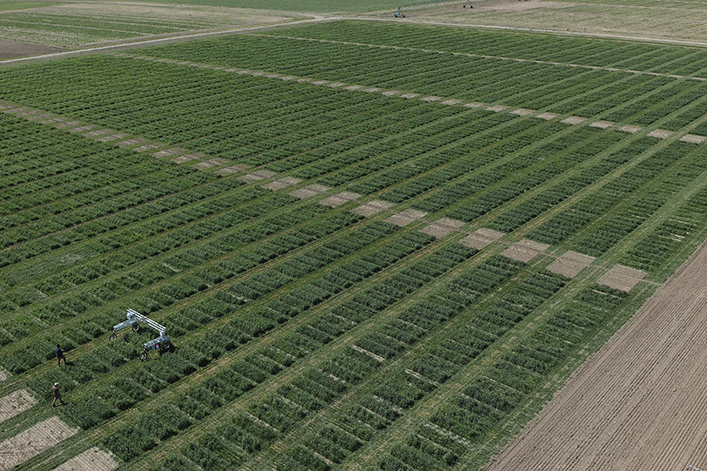
Noble said the multi-site approach opens up some intriguing possibilities for future research.
“We can start looking at how things change over time and how different varieties or conditions are causing different responses,” said Noble. “That’s the sort of thing you can start doing with these tools.”
And while the current pilot project is only half complete, Singh also has his eye on future work with these new tools.
“It is not only supporting this research; it can be helpful in agronomic-based studies, like nutrition, nitrogen-based studies or pest detection,” he said.
The plan is to extend their focus beyond spring wheat to include other crop phenotyping studies, specifically mentioning potatoes, winter wheat, and canola.
Singh also highlighted the new skill sets in data management and data-driven decision-making that have added valuable capabilities to his team’s arsenal.
“We definitely will have more experience to bring to other crop types.”


